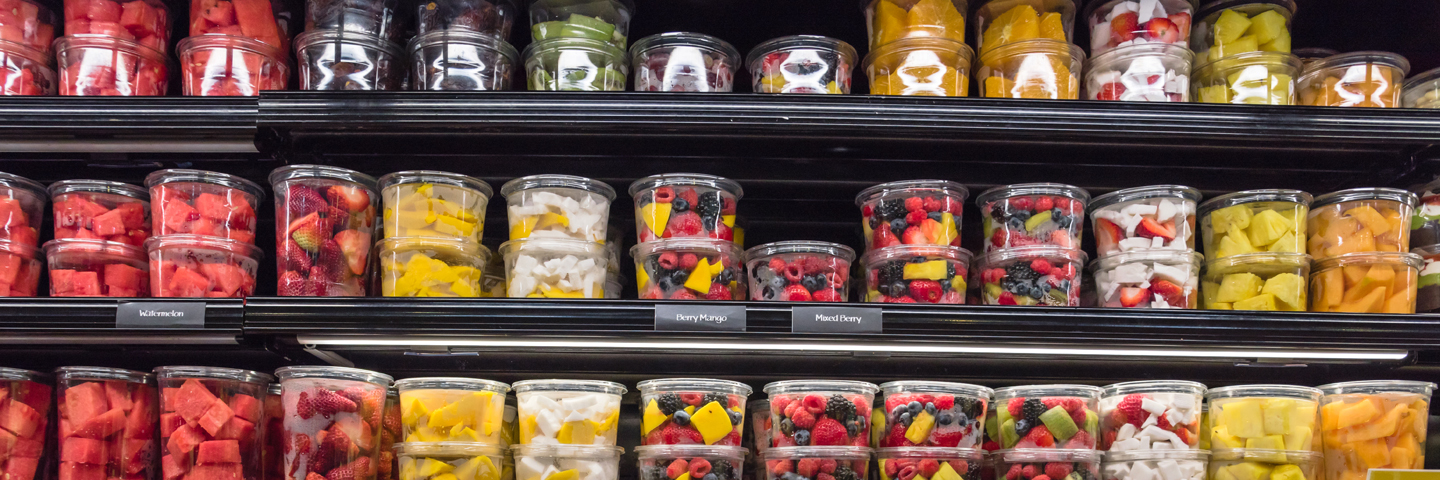A substantial portion of food and drink packaging in current use is based on materials derived from petroleum feedstock, i.e. plastics. These fossil-carbon based materials have been developed to protect the packaged foodstuff from the external environment and so confer many of the necessary barrier properties. These are desirable attributes in the cause of minimizing food waste for economic, societal and environmental benefits.
However, the environmental concerns resulting from their end of use, and their behaviour and fate when discarded into the environment, have been well documented. Most fossil fuel-derived plastic materials persist in the environment for many decades, resulting in the images frequently reported in the media of oceans accumulating plastic and wildlife impacted and injured by plastic waste.
Following the EU exit, the UK may no longer be bound by EU-set targets such as the EU Single-Use Plastics Directive but the UK government has, in its 25 Year Environment Plan for England, pledged to eliminate avoidable plastic waste by 2042. In addition, UK targets for net-zero carbon will require a move away from fossil fuel-derived plastics.
As a result, much research is underway to develop new, alternative packaging materials, with most of the focus being given to the degradation of these new materials in the environment. More specifically for food and drink packaging, their safety in terms of the transfer of chemicals into the packaged food or beverage, known as migration, is also not known.
Some materials may be replaced by others. For example, single-use paper/plastic laminated cups for use with take-away beverages can be replaced by biobased materials and/or by reusable cups. Over the past few years, there have been a number of notifications under the Rapid Alert System for Food and Feed concerning bamboo-melamine articles, including reusable coffee beakers. These consist of melamine plastic as the main structural component along with ground bamboo or other fillers such as corn. Migration into the food product from such materials has been found to be many times higher than the legal limits for melamine and/or formaldehyde, leading to the withdrawal of some products from the EU market.
Also worrying is that many are labelled and marketed as ‘biodegradable’, ‘eco-friendly’, ‘organic’, ‘natural’, or even in some cases ‘100% bamboo’, which does not reflect the true nature of the product – misleading the consumer.
What impact will the current pandemic have on the development of future food contact materials and articles? Firstly, we anticipate consumers will seek the safety assurance of the use of more primary and secondary packaging for food products to address concerns of transmission from consumer handling of fresh (unwrapped) products. This is converse to the desired outcome of minimising the use of packaging material from the outset.
Although the UK Food Standards Agency states that the risk of contracting Covid-19 from food and packaging is low, the government Covid-19 guidance does state: “If you have reason to believe the packaging has been contaminated, you should follow the recommended cleaning guidance.” Other websites recommend the use of “antibacterial wipes or detergent spray” or “carefully diluted bleach”. What will the new normal be?
Are alternative routes to this cleaning to introduce new materials, with biocides on the surface of the packaging medium or formulated with substances that provide antimicrobial or antiviral properties?
How can some or all of these measures be introduced in a way that has less impact on the natural environment? As well as maintaining food safety and shelf-life benefits, and all in a way to provide safety assurance to consumers in a pandemic environment?
All of this heightens the urgency and need to develop the materials of the future. These materials must address all of these issues, and achieve the government targets of the 25 Year Environmental Plan and net-zero carbon goals, whilst seeking to extend shelf life to reduce food waste – and all must be safe for food contact.




